Last night, on the eve of the WWDC 2022 keynote, the Apple Store went into a rare maintenance status, which generally hints at a heavyweight new consumer product release and availability.
The same situation had previously only occurred in 2017, when Apple introduced eight new products in one fell swoop at that year's WWDC, leaving aside the routine updates to its software systems, when it launched an unprecedented trio of hardware products in the form of the iPad Pro 10.5, iMac Pro, and HomePod.
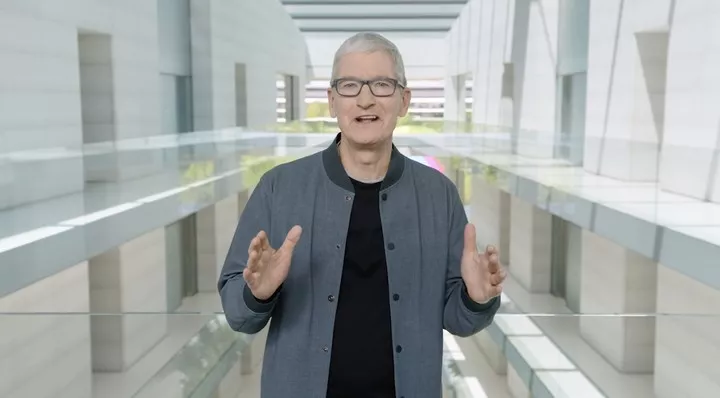
As expected, this year's WWDC was another developer conference where the spotlight was stolen by new hardware. The new generation of M chips and the redesigned MacBook Air were a real 'surprise'.
After two years, the M2 chip means that the "transition period" is over, and Macs have said goodbye to the x86 architecture and entered the Arm architecture era.
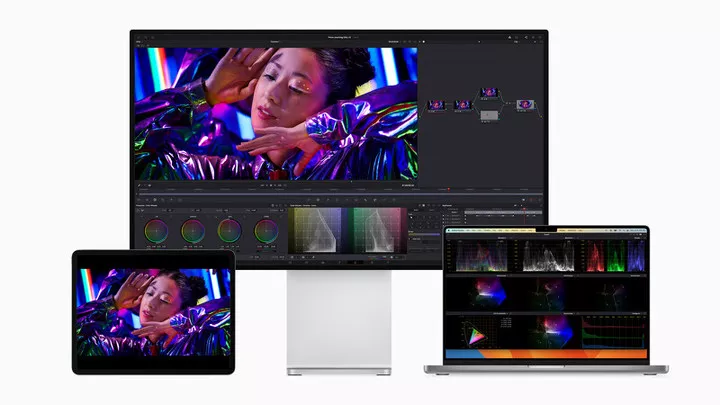
▲ Apple's "computers".
It's not just the Mac, but the iPad with the M-chip is also moving closer to the A-chip iPad, moving closer to what Apple calls the "next generation of computers.
M2 chip, an upgrade for precision jamming
The M2 chip is not an innovation, but a normal iteration of an established commercial company.
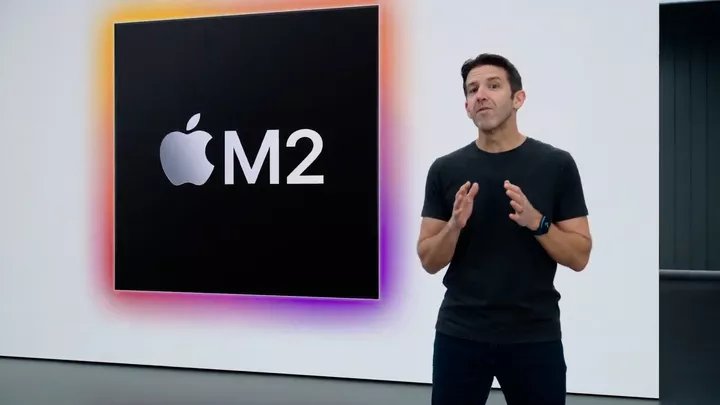
The M2 is more like the A15 to the A14, with minor upgrades and optimizations.
The M2 uses TSMC's "second generation" 5nm process, presumably N5P (5nm performance enhanced). According to TSMC's description of the N5P process, it offers a 7% performance improvement and a 15% power improvement for the same power.
However, the M2 has an 18% CPU and 35% GPU improvement over the M1, and the degree of energy efficiency optimization is not mentioned, so it is assumed that Apple is still tuned to the M1's performance release power (up to 15W).
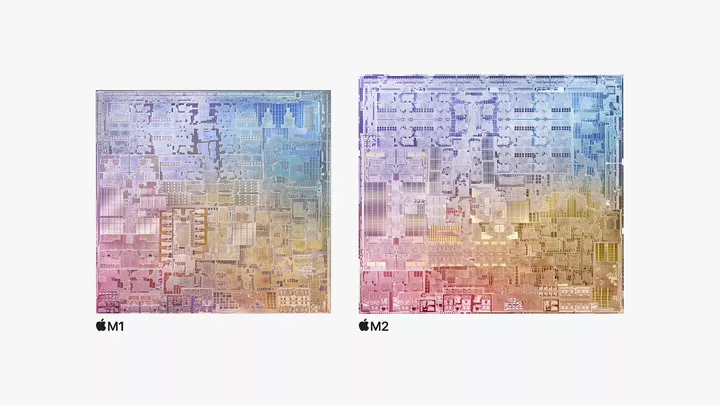
▲ The M2 has gotten bigger and more complicated. Image from: Apple
Apple's M2 chip has also been structurally upgraded to take advantage of the process bonuses. To sum up, there are more cores, more chip area, and more transistors.
The M2 chip has a larger area and a transistor count of over 20 billion (compared to 16 billion in the M1), as seen in Apple's perspective view of the M2 and M1 chips.
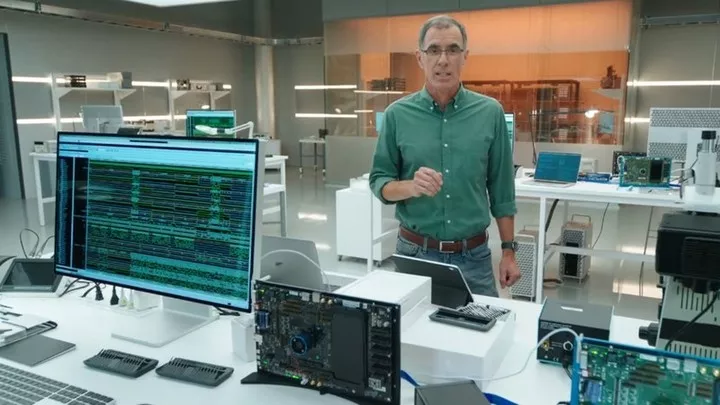
▲ Tim Millet, Apple chip architect and vice president. Image from: Apple
In a previous interview, Tim Millet, Apple's chip architect and vice president, said that the success of the M chip depends on the accumulation of Apple's previous work on the A-series chip design.
The core of the CPU in the M1 chip also comes from the A14 chip, with Firestorm as the performance core and Icestorm as the efficiency core.
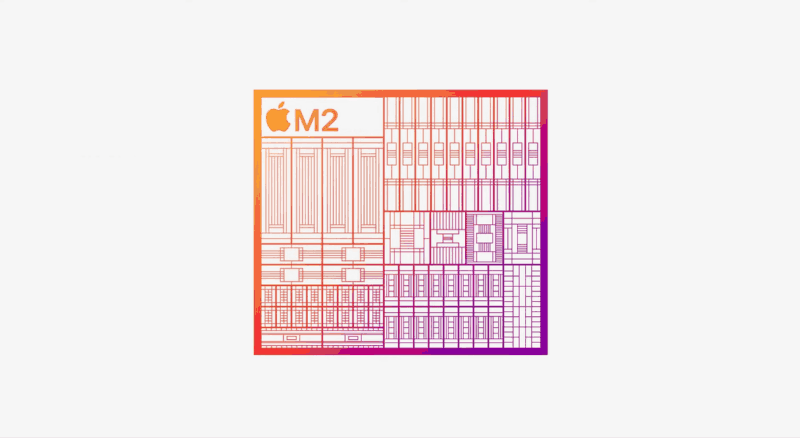
The M2 chip still has a 4+4 CPU, but its corresponding cores are likely based on the new Avalanche and Blizzard cores found in A15, the former for performance and the latter for power efficiency.
Also, the L2 shared cache of the M2's performance core has been increased to 16MB.
However, compared to the A15, the M2 boost on the CPU is modest, so it can't be ruled out that Apple has reserved some room for a boost to be released in the subsequent M2 Pro and M2 Max chips.
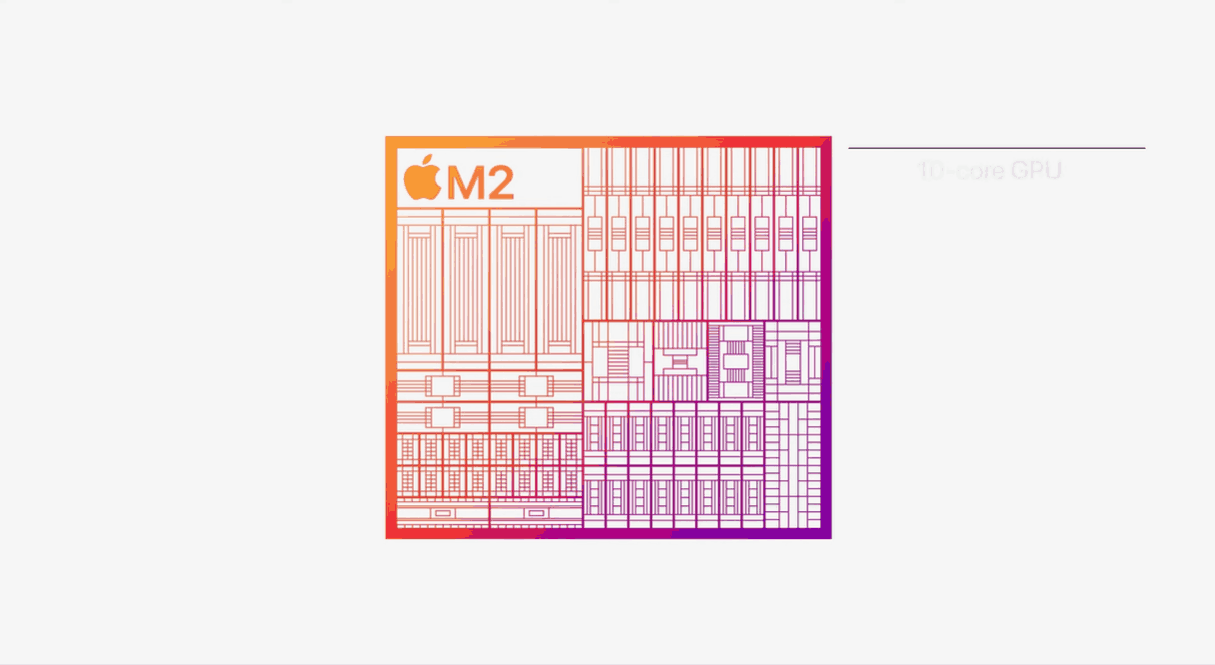
The M2's GPU is nearly 35% better, with a higher core count (up to 10 cores) and what Apple says is a new generation of core architecture.
Correspondingly, the M2's 10-core GPU performance comes to 3.6TFLOPS, as a comparison the M1's 8-core GPU performance is 2.6TFLOPS, slightly higher than the NVIDIA GeForce GTX970's 3.49TFLOPS.
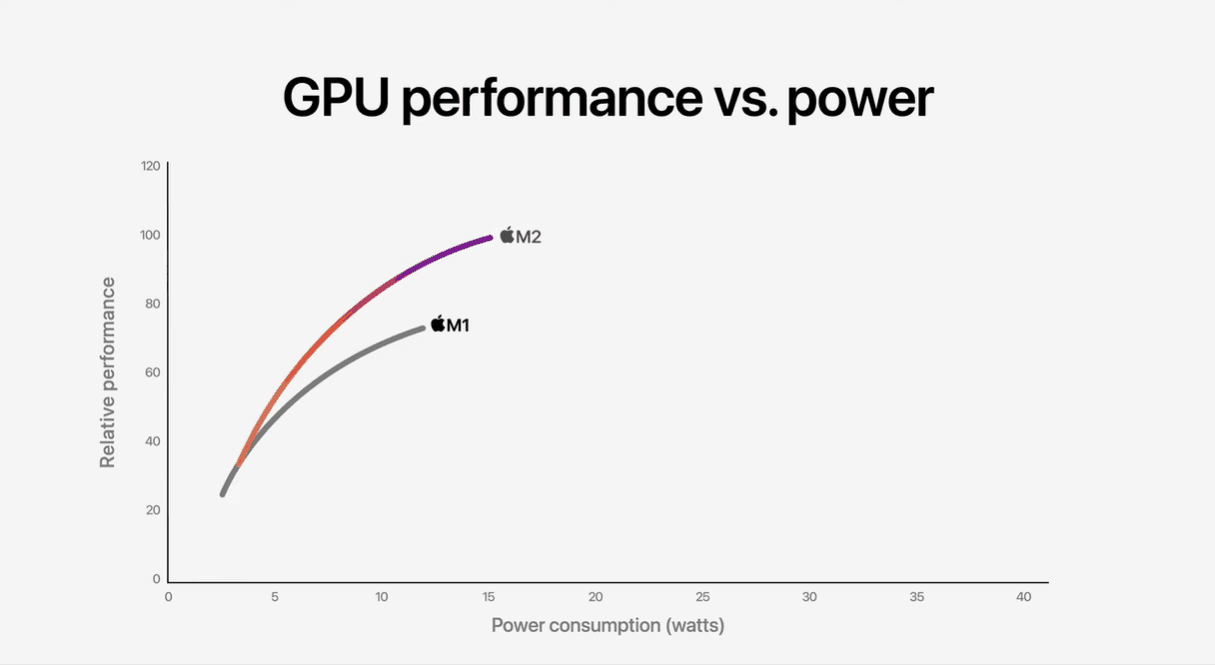
It's worth noting, however, that the higher performance of the M2 GPU comes with higher power consumption and may not be able to sustain high performance for long in the passively cooled MacBook Air.
The M2 also gets an upgrade to the NPU, presumably also taken from the A15, and still has 16 cores, boasting 15.8TOPS of computing performance, compared to 11TOPS for the M1 and 15TOPS for the Qualcomm Snapdragon 8cx Gen 3.
The M2 has also been enhanced with the addition of LPDDR5 6400 support and up to 24GB of unified memory (8GB is still standard), resulting in a bandwidth increase to 100GB/s, a 50% increase over the M1 (68GB/s).
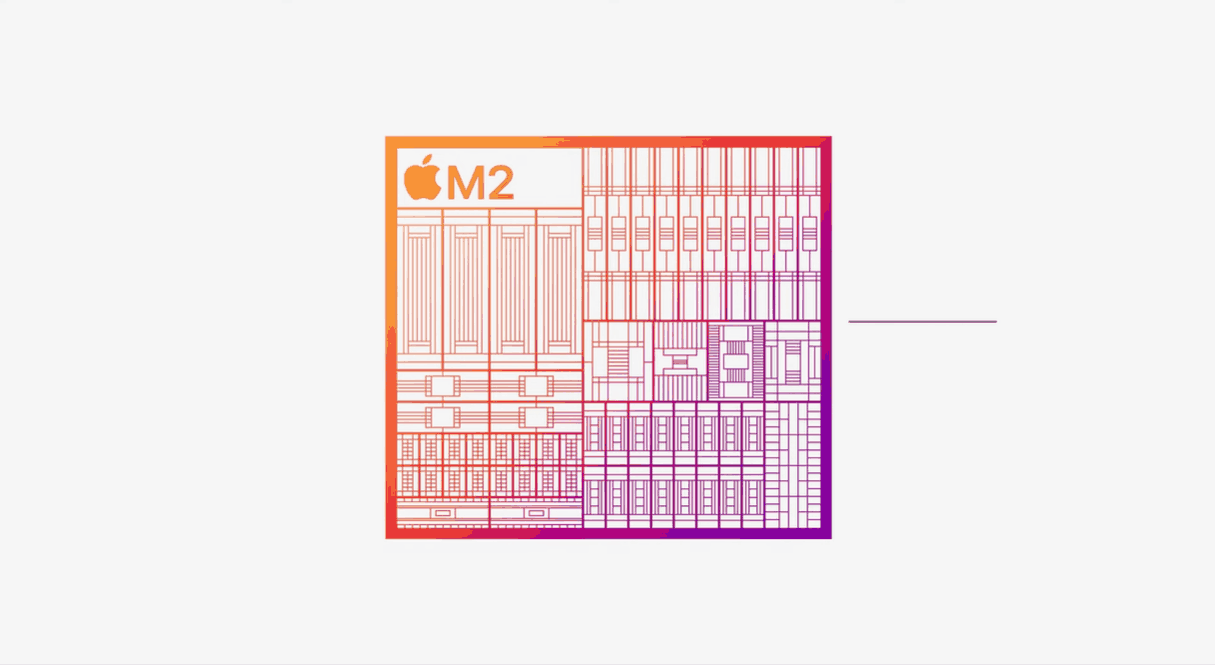
Not only does it optimize, upgrade, and add cores to the existing cores, the M2 also introduces a separate media engine from M1 Pro and M1 Max, adding support for video in formats such as 8K H.264.
Unfortunately, the M2 still only supports two Thunderbolt 3 ports, as well as a 6K 60Hz external display.
The M2 doesn't wait for TSMC's 3nm process and doesn't overhaul it, but rather upgrades the original build of the M chip architecture accordingly.
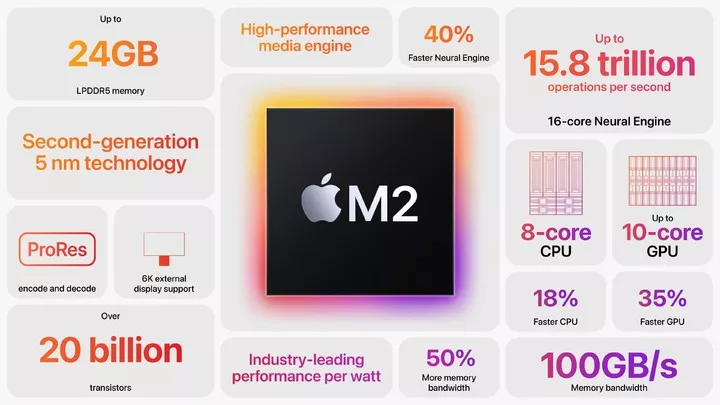
In line with the idea of upgrading the A-series chip, the subsequent M2 Pro and M2 Max will undoubtedly be "spliced" and "expanded" based on the M2.
In terms of transistor count and core count alone, the M2 is still not as good as its predecessors, the M1 Pro and M1 Max, and Apple has taken it right, without overstepping the mark, and it's an apt upgrade.
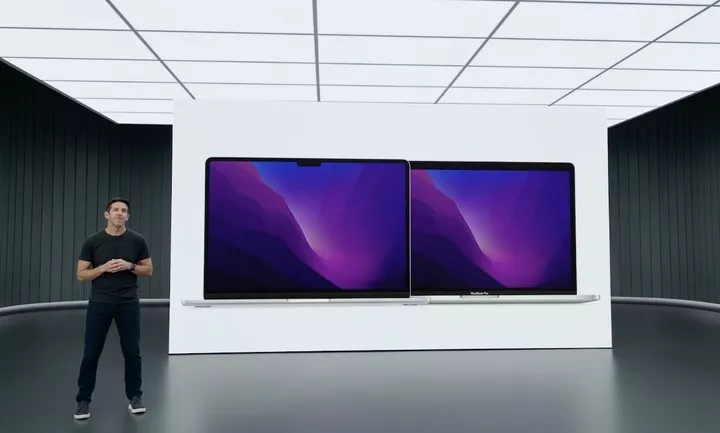
▲ Left: New MacBook Air, Right: MacBook Pro (M2). Image from: Apple
Just like the M2-powered products, the new MacBook Air is aimed at the "thin" and mobile workforce, while the old MacBook Pro with M2 is more of an entry-level Mac for the general public.
The positioning is precise and just right.
Apple's "personal computer" begins the M-chip era
With the release of the M2 chip, the MacBook Air has finally been remade, ditching its long-standing "wedge shape" and squaring up to the new MacBook Pro.

▲ Light as a feather, the new MacBook Air (only 0.05kg lighter, but really thin). Image via: Apple
So, thanks to the energy efficiency of the M chip and the concept of completely passive cooling, the new MacBook Air is just 1.13cm thick and weighs 1.24kg - the thinnest Mac on Apple's website today.
It's thin enough to give it a few shades of the MacBook 12 in some angles. With the same focus on thinness and mobile working, the MacBook is a bit of a misnomer.
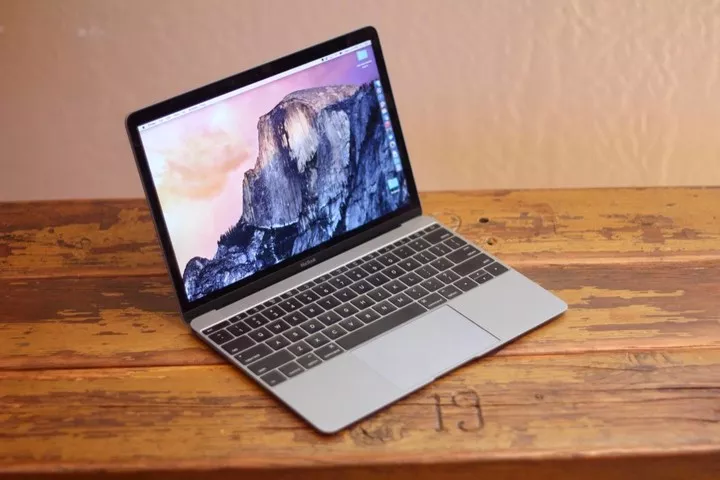
▲ MacBook 12.
The overly aggressive design lost its audience. The MacBook Air line, which was slow to update its look, relied on a lower price point to become the best choice for entry-level Macs.
The advent of the M1 chip last year and the abundance of space inside the old MacBook Air made a MacBook resurrection possible again.
The MacBook 12 was positioned as a device between the Air and Pro, with a focus on thin, light and portable mobility. The subsequent axe was not really a hardware configuration issue, but rather Apple splitting the need for this thin, light, and portable product line between the iPad and Mac.
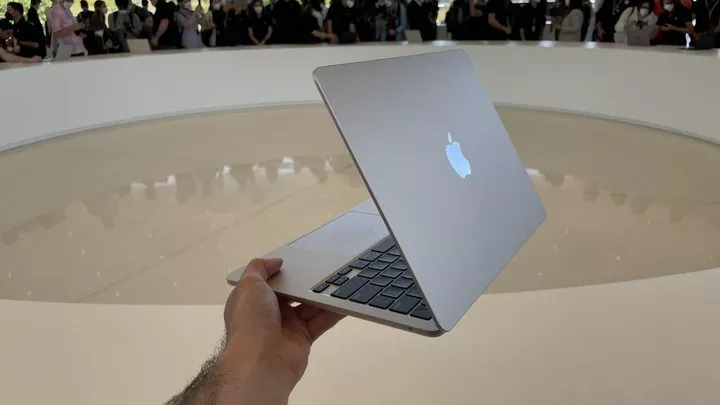
▲ New MacBook Air. image via: cnn
The newly designed MacBook Air and iPad Pro are arguably the successors to the MacBook line. The MacBook Air line, which remains unchanged, and the iPad, which continues to refresh the iPadOS system, are also waiting for a node.
And the M2 chip and iPadOS system released last night is that node.
The new MacBook Air for the M2 is priced higher and is no longer positioned as the "entry level," with the M1 MacBook Air taking over the entry level. The new MacBook Air is similarly positioned to the MacBook 12, offering thinness and portability in a traditional notebook form factor.
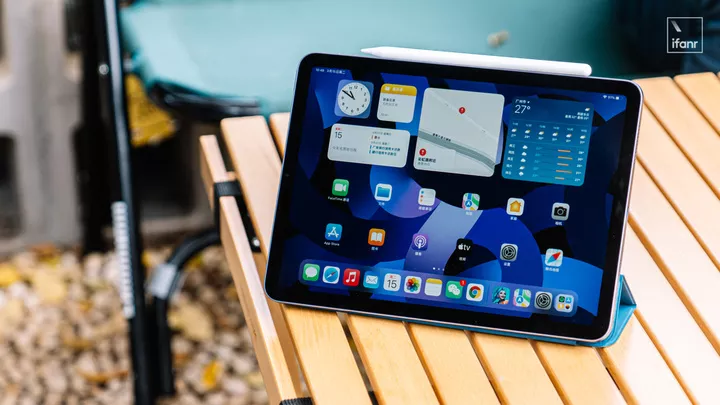
▲ iPad Air with M1 chip.
And as iPadOS continues to be optimized, iPad is more like a "personal computer" with multiple form variations.
There was always a perception that the M1 was a bit overpowered and underutilized when it came to the iPad platform, even down to the iPad Air.
The targeted 'upgrade' of iPadOS 16 makes it clear that Apple is actually playing a big game, using the M-chip to break down the barriers between different systems and integrate them together.

macOS Ventura's front-of-the-stage scheduling feature appeared on the iPad and was separately optimized for external monitor displays. And it started with some apps that supported dual-screen display of different content, and then went on to expand to more 'productivity' tools with its grip on the ecosystem.
In fact, in iPadOS 16 and macOS Ventura, many of the interface styles are almost the same, and with the gradual convergence of functions, it is only a matter of time before the "window" between macOS and iPadOS is broken.
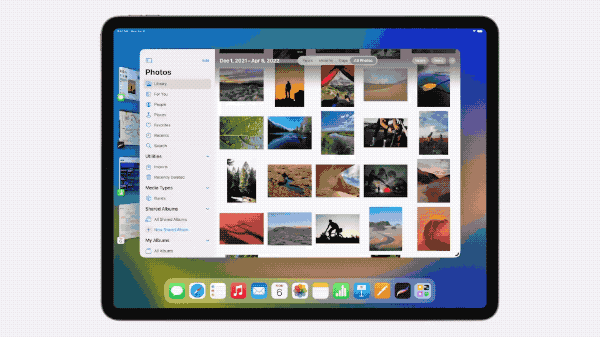
Just as the step-by-step update strategy of the M-chip has led to a new understanding of the Arm chip, Apple is now reversing the traditional perception of the "personal computer" step by step.
In fact, the concept of a personal computer is quite broad in Wikipedia, except that in the traditional view, a personal computer is almost equivalent to Windows or macOS.
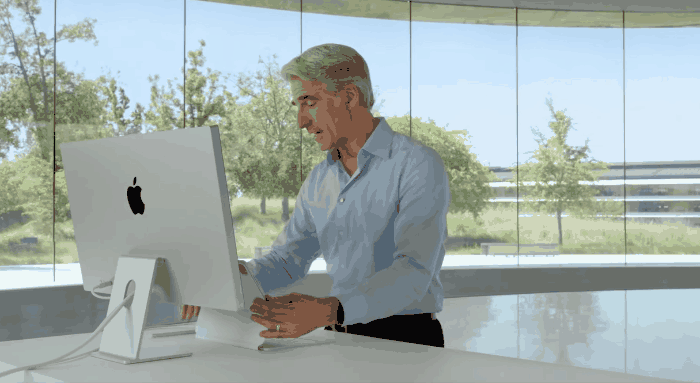
This is a personal computer.
The iPadOS is not just a name change from iOS, but a step change towards more landscape friendly creation and use. the introduction of the M-chip feels like a pavement for unlocking the iPad's potential.
When the M2 was released and the Macs moved to the Arm architecture, iPadOS and macOS began to work together. Apple's "personal computer" no longer just refers to a Mac, or an iPad, but to a device with an M chip.
Apple's "personal computer" also came to the Arm chip era once and for all.